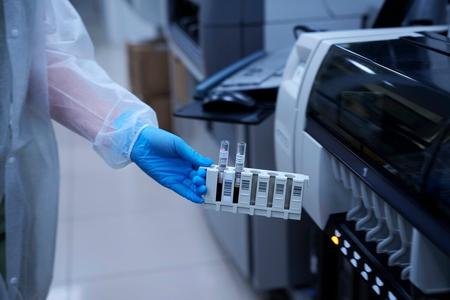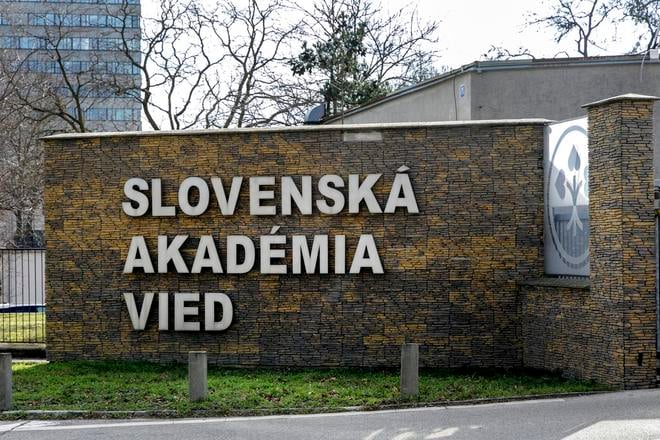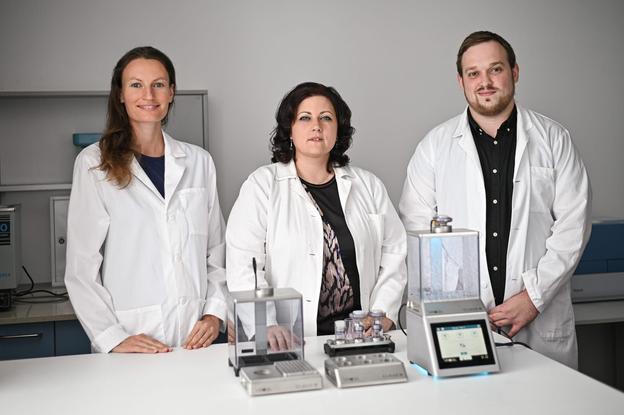There are many nagging questions about events or phenomena in both our present and distant past that scientists are looking to answer, many of them pertaining to close and distant history alike.
For example, although the role of CO2 in current climate change is well understood, the same cannot be said about changes to its levels in the atmosphere millions of years ago. A Slovak scientist recently led an international team that looked at this very question regarding the ice age that started around 370 million years ago and lasted around 100 million years. The scientist’s own novel approach was used in the study.
Meanwhile, Slovak Egyptologists have managed to answer some important questions about a period a little bit closer to our own, shedding light on how metallurgy was used in ordinary settlements. Most of our knowledge on this has been gleaned from burial treasures and tombs.
This overview provides a selection of research conducted at universities and other institutions, including the identification of a molecule that improves lung disease diagnosis; mathematical modelling of biological and epidemiological processes; as well as science stories that have appeared on the Slovak Spectator website.

To stay up to date with what scientists in Slovakia or Slovak scientists around the world are doing, subscribe to the Slovak Science newsletter, which will be sent to readers free of charge four times a year.
Wider spectrum of scientists to be recognised
This year, the ESET Science Award is in its seventh year and for the first time is open to all scientists, regardless of their scientific field. In other words, researchers from the humanities and social sciences are also eligible for the award for outstanding scientific personality.
One of the reasons why humanities and social sciences had not previously been included is that as a technology company, Eset was closer to other scientific fields. However, the company says that the pandemic, power of social media, relativisation of facts and other phenomena have shown that these scientific fields are becoming increasingly important and that an interdisciplinary approach is required to tackle these issues.
That is also why the theme of this year's edition is science as a pillar of trust.
The award will be presented later in the year in three categories: Outstanding Scientist in Slovakia, Outstanding Scientist under 35, and Outstanding Higher Education Scientist, with one winner in each category. The winner will be selected by an international committee chaired by a Nobel Prize winner.
Recognition of their work
At the annual meeting of the US Society of Toxicology in the US in March, researchers from the Institute of Experimental Pharmacology and Toxicology at the Centre of Experimental Medicine of the Slovak Academy of Sciences won a prestigious award for their study into developing in vitro protocols for the testing of biocompatibility of medical devices.
The protocols are intended to assess eye irritation and phototoxicity using a reconstructed human tissue model. The end goal is to reduce the need for animal testing and instead integrate alternative methods.
The primary author of the research is PhD student Peter Pôbiš, whose presentation at the meeting was met with great interest by experts in the field.
One of the co-authors of the research was Helena Kanďárová, the director of the institute, who has previously been recognised for her contributions to the development of alternative methods for regulatory testing purposes and lessening the need for animal testing.
More Slovak scientists in EASA
During the annual meeting of the European Academy of Sciences and Arts (EASA) in early March, newly elected members received their diplomas. Among these were four scientists from the Slovak Academy of Sciences: Ivan Chodák from the Institute of Polymers, Viliam Novák from the Institute of Hydrology, Peter Šiffalovič from the Institute of Physics, and Marian Reiffers from the Institute of Experimental Physics.
Founded in 1990 as an NGO, EASA seeks to promote scientific and social progress. It has brought together around 2000 scientists and artists from all over the world. Its goals include innovative research, interdisciplinary cooperation, and the spread of scientific knowledge. Members are elected on the basis of their achievements.
Overview of other research and development activities at universities:
Scientists find a molecule that improves lung disease diagnosis; Slovak Academy of Sciences; lead scientist Vladimír Leksa. Idiopathic pulmonary fibrosis often associated with long COVID is one of the most severe lung diseases, but for a long time there were no known known biomarkers indicating its onset. A team of scientists from several institutions was able to identify a molecule which was a specific and reliable biomarker. Read more here.
New materials that showed surprising superconductivity; Slovak Academy of Science; lead scientist Gabriel Pristáš. In collaboration with Austrian colleagues, Slovak physicists were able to prepare high-entropy alloys in the form of thin films. These are then used to modify the surfaces of cutting tools and in situations where resistance to extreme conditions are required. The team found out that they also exhibit superconductivity and was able to enhance a property that may have been otherwise overlooked. Read more here.
Joint Slovak-Polish team discovers ancient technologies; Slovak Academy of Sciences; lead scientist Martin Odler. While knowledge of the metallurgy from Ancient Egypt's New Kingdom and the Third Intermediate Period (approximately 1550–664 BCE) primarily came from treasures found in royal tombs, everyday use of metals remained much less explored. In their paper, the team presented an insight into the use of metals in an ordinary settlement during the reign of King Thutmose II. Read more here.
Mathematical modelling of biological and epidemiological processes; Comenius University; lead scientist Pavol Bokeš. The aim of the study is to find the most efficient way for a bacterium to regulate the production of certain proteins so that it can survive even antibiotics. This research shows why some survive adverse conditions. The team investigated a mathematical model that describes how often and in what "doses" proteins are produced. Read more here.
Hybrid breathing metal-organic-framework (MOF) glasses for indoor air quality; Alexander Dubček University of Trenčín; lead scientist Orhan Sisman. Developing air-permeable smart windows to monitor and reduce CO2 levels could be a radical solution for improving indoor air quality in buildings. The HyBreath Glass Project aims to pave the way for “artificial breathing with smart windows” by embedding functional electroactive materials into microporous MOF glasses to monitor and reduce CO2 levels in indoor public places.
Other Slovak science stories on Spectator.sk:
INTERVIEW: Neuroimmunologist Norbert Žilka became involved in research into Alzheimer's disease after a chance meeting with his university professor on a train. From there, a series of events led to him to reading a groundbreaking article on the disease, which made him realise that he wanted to study it. Today, he says, Slovakia is a leader in research into the degenerative condition.
PALAENTOLOGY: An international team led by Slovak scientist Hana Jurikova has shed light on an ancient climate enigma - the Late Palaeozoic ice age. Specifically, the team was able to uncover the role CO2 played in it using a novel approach pioneered by Jurikova herself and refined by her team.
DINOSAURS: Scientists had three major objections to the premise for the Jurassic Park movie. In the film preserved blood from a fossil of mosquito found in Jurassic amber was used in combination with frog DNA to clone the giant reptiles. They said that in reality, blood would decay into small fragments, there was no known biting insect from that period, and such cloning would be impossible. Now, an international team led by a Slovak scientist have shown that the first two of those objections are no longer valid.
EVOLUTION: Inhabiting areas all the way from Pakistan to Indonesia and commonly found near human settlements, the Asian black-spined toad is one of the most poisonous invasive toads in the world. But new research which involved a scientist from Comenius University, has discovered it is not one, but actually two species.
ASTRONOMY: A small cube with 10-centimetre-long edges is doing big things in orbit. Built by Slovak company Spacemanic, the satellite is a testing bed for a future constellation of similar spacecraft.
MEDICINE: Scientists from the Slovak Academy of Sciences recently helped improve a promising diabetes treatment. The team, led by polymer chemist Igor Lacík, took a simple approach to the problem.
HISTORY: A long-forgotten hilltop settlement has been uncovered at the foot of Slovakia's Štiavnické Vrchy hills. Using state-of-the-art aerial scanning technology, researchers have found remnants of stone structures and terraced fields stretching down the valley slopes – evidence of a rich and complex past.
This article is supported by the ESET Foundation, whose annual ESET Science Award recognises exceptional scientists.


 The Slovak Academy of Sciences. (source: TASR)
The Slovak Academy of Sciences. (source: TASR)
 The ESET Science Award. (source: Eset)
The ESET Science Award. (source: Eset)
 From left: Tatiana Milasová; Helena Kanďárová, Peter Pôbiš. (source: Archive of P. B.)
From left: Tatiana Milasová; Helena Kanďárová, Peter Pôbiš. (source: Archive of P. B.)